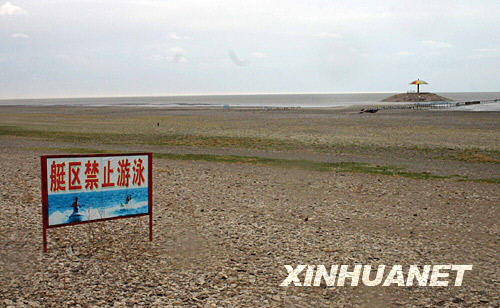The water level of the Dalai Lake, the largest fresh water lake in northern China, has fallen about 3 meters since 2002, while its area has contracted by more than 500 square kilometers, said local authorities.
 This picture taken on May 23, 2008 shows that the Dalai Lake, the largest fresh water lake in northern China, is running dry.
This picture taken on May 23, 2008 shows that the Dalai Lake, the largest fresh water lake in northern China, is running dry.
"If the lake continues to shrink, it may soon disappear," said Liu Songtao, deputy director of the Dalai Lake National Nature Reserve Administration, in the Inner Mongolia Autonomous Region.
Dalai Lake, also known as Hulun Lake, once covered 2,339 square kilometers with a water volume of 13 billion cubic meters. It is the major water system of the Dalai Lake National Nature Reserve.
Drought and excessive exploitation has caused its water level to fall, Liu said.
"Some oil and mineral companies have been pumping a large volume of water from the lake every year, which is considered one of the major factors in the shrinkage," said Liu.
The environmental balance of the Dalai Lake National Nature Reserve will be destroyed, and the 3,252 sq km of marshland will disappear as well, Liu added.
With an area of 7,400 square kilometers, the Dalai Lake National Nature Reserve is composed of lake, marsh, grassland and woods. The marshland was listed as one of the important marshes in Asia in 2001, and the reserve joined the International Man and Biosphere Reserve Network in 2003.
To increase the water in the Dalai Lake, the local government planned to pump water from the Hailar Lake amounting to 1 billion cubic meters each year.
However, the project was seen as ineffective by many scientists, since Hailar Lake has also been shrinking in recent years.
According to Liu, the local government is going to issue regulations on the protection of the Dalai Lake National Nature Reserve before September.
"The regulations are expected to limit the use of natural resources here, especially the water of the Dalai Lake," Liu said.